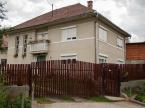Information
Sighetu Marmaţiei, also spelled Sighetul Marmaţiei (Hungarian: Máramarossziget, Ruthenian: Sihota), formely Sighet, is a city in Maramureş county near Iza river, in Romania.
The city has 44,185 inhabitants (14.8% Hungarians, 3.3% Ruthenians; 1992 census).
Neighboring communities are: Sărăsau, Săpânţa, Ocna Şugatag, Giuleşti, Vadu Izei, Rona de Jos and Bocicoiu Mare communities in Romania, Bila Cerkva community and Solotvino "town type community" in Ukraine (Transcarpathia).
History
The city has been inhabited since the Bronze Age. There is a very important rout in the Theiss Valley. The first mention of the settlement is from the 11th century.King Ladislas IV of Hungary settled Romanians in this territory between 1272 and 1290. The Dragoş family in Maramureş was the founder of the Principality of Moldavia. In 1352 the city was a free Royal Town and the capital of Máramaros County.
From 1556 - like the Castle of Huszt - the settlement was a residence of the Prince of Transylvania. From 1570 - 1733 the town and the county was part of the Principality of Transylvania. In 1733 King Charles III reallocated it and Máramaros County to Hungary from Transylvania. Sighetu Marmaţiei was one of the Romanian and Ruthenian cultural and political centers in Hungary. In 1910 the settlement was a town in the Máramaros County of the Kingdom of Hungary.
Sighetu Marmaţiei came under Romanian administration (see Kingdom of Romania) at the end of WWI (see Treaty of Trianon), and again under hungarian administration in 1940 as a result of the Second Vienna Award.
The Hungarian administration lasted until 1944 and in these years more than 20,000 Jews from Sighet would be sent to Auschwitz (including the Nobel Prize winner Elie Wiesel, born in Sighet) and other extermination camps. Nowadays there are only about 100 Jews living in Sighetu Marmaţiei. The Jewish community was formerly led by the Teitelbaum family who also led that of the Satmar (Moshe Teitelbaum was Sigheter Rebbe before succeeding his uncle Joel Teitelbaum as Satmar Rebbe).
The Treaty of Paris at the end of World War II reversed the Vienna Awards, and Sighetu Marmaţiei returned to Romania. The settlement was a town 1952 - 1960 in Baia Mare Region, a city 1960 - 1968 in Maramureă Region and since 1968 in Maramureă County.
In the 1960s the Securitate (Communist secret police) ran a prison for "class enemies" in Sighet which is now a museum.
The well-known Hungarian naturalist-realist painter Simon Hollósy was born in the town on February 2, 1857.
Romanian
cities

 English
English









